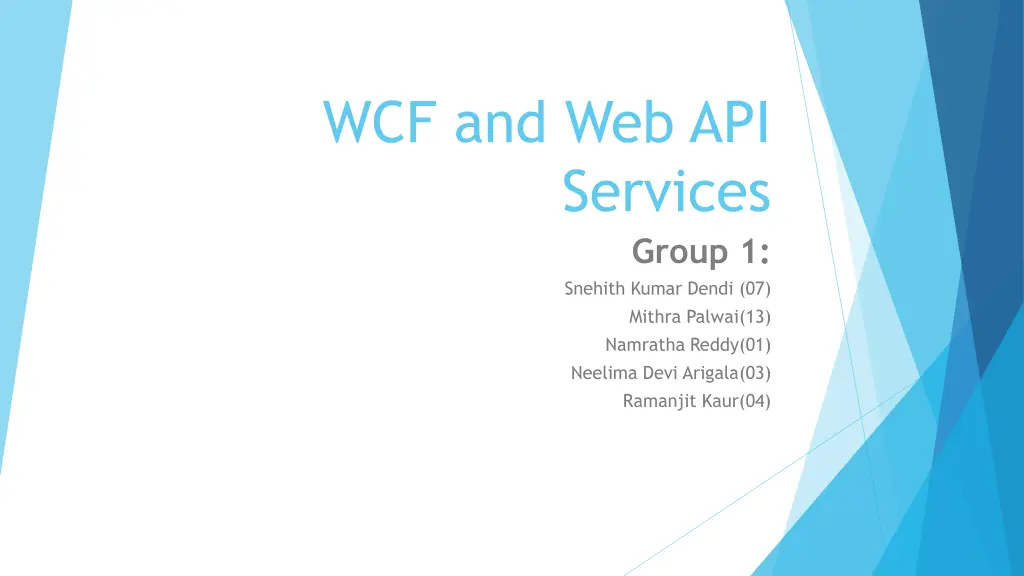
Introduction to Web Services: SOAP & REST Explained
Learn about Web Services, SOAP, REST, WCF, and Web API services in this informative content. Understand how web services work, their protocols, and advantages. Explore examples of web services in action, such as USPS shipping services, along with the role of SOAP in communication between clients and servers.
Download Presentation

Please find below an Image/Link to download the presentation.
The content on the website is provided AS IS for your information and personal use only. It may not be sold, licensed, or shared on other websites without obtaining consent from the author. If you encounter any issues during the download, it is possible that the publisher has removed the file from their server.
You are allowed to download the files provided on this website for personal or commercial use, subject to the condition that they are used lawfully. All files are the property of their respective owners.
The content on the website is provided AS IS for your information and personal use only. It may not be sold, licensed, or shared on other websites without obtaining consent from the author.
E N D
Presentation Transcript
WCF and Web API Services Group 1: Snehith Kumar Dendi (07) Mithra Palwai(13) Namratha Reddy(01) Neelima Devi Arigala(03) Ramanjit Kaur(04)
Contents: Introduction to Web Services SOAP Services REST Services WCF Service ( Creating and Testing )
Introduction to Web Services A Web Service is a class that resides on a web server and can be accessed via the Internet or intranet. Web services provide a way to make useful functions available to clients on other platforms.
Introduction to WEB Services Example: The website for USPS offers web services that allows a user to calculate shipping rates, correct addresses and track packages.
Introduction to Web Services Web services communicate with the clients by using either the SOAP or REST protocols. WCF Services use SOAP. Web API services use REST.
SOAP Services Simple Object Access Protocol is referred to as SOAP. SOAP uses XML to send data between host and client. It can be used over many types of transport media and has a lot of security options.
SOAP Services A proxy class is needed to work with SOAP. WCF generates the proxy class to work with SOAP.
The above figure shows how WCF Services work with SOAP. WCF Services exposes one or more endpoints. WCF Client uses SOAP over HTTP to communicate with the endpoints. For this to work, both the client and server must be running a version of .NET Framework that supports WCF.
Advantages of SOAP Can be used over many transport media, such as TCP, MSMQ and HTTP. Can create strict contracts between two parties and add security layers.
REST Services Representational State Transfer is referred to as REST. REST uses HTTP and URLs rather than XML. It is less complicated than SOAP. Proxy classes are not needed with REST Services.
REST Services REST Services return JSON, so they can be consumed by JavaScript without any transformation at all. These Services are popular for Ajax applications.
The above figure shows how Web API Services work with REST. The client sends a HTTP request to a specifies URL and receives a JSON or XML response. The clients that consume Web API Services do not require the .NET Framework to be installed.
Advantages of REST. Relies on the existing HTTP standard, so it is faster and easier to configure. Can return data in JSON or XML format.
WCF Service Windows Communication Foundation is referred to as WCF.
